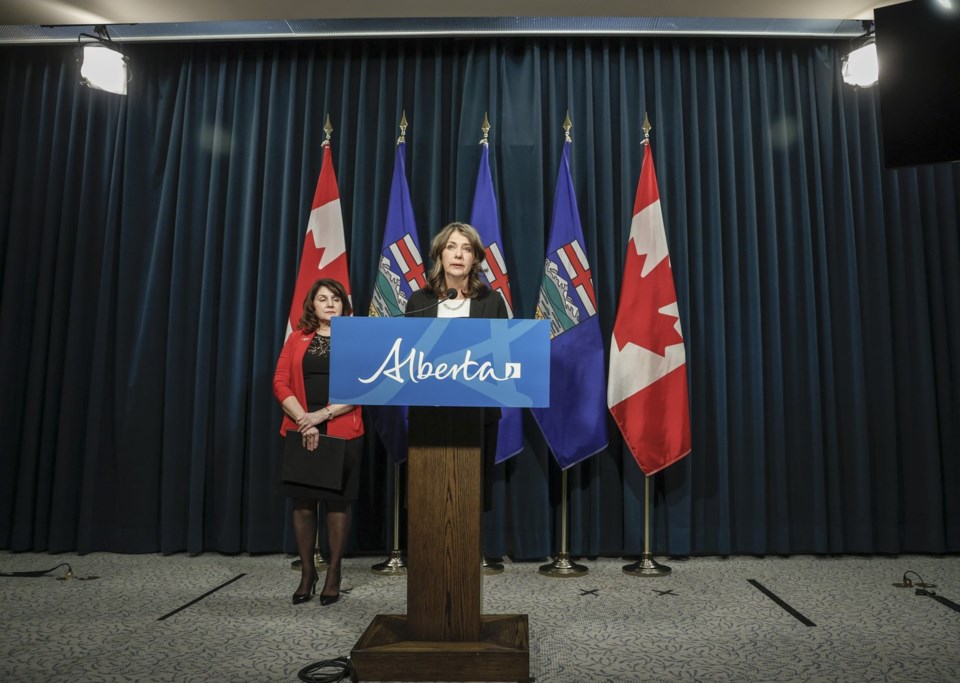EDMONTON — Alberta is fundamentally changing how it funds hospital surgeries, but critics say the change won't improve the public system and will only accelerate more care in the privatized system.
Premier Danielle Smith announced Monday a new "activity-based" model is on the way, to be implemented for some surgeries in 2026. The model ties public funding to the number and type of procedures performed.
Smith said the program will drive costs down by fostering competition among public providers and those who perform publicly funded procedures in private clinics.
"The old top-down approach offers no incentive to do more for patients and limits our ability to direct dollars where they can get the best results," Smith said.
“The problem here is (that) hospitals miss their target and there's no accountability because they've already got the pot of money."
Smith said in publicly funded, privately run surgical facilities, routine eye, hip and knee surgeries can be done much faster than in public hospitals. She said the new model will see government funding follow the patient, making health care more efficient, lowering wait times, providing more transparency and attracting more surgeons to the province.
She added that if hospitals have idle operating room time, they will need to “be creative” and become more efficient. Otherwise they’ll lose funding or their operating room space could be lent out to private surgical companies.
Smith's United Conservative government is in the midst of dismantling Alberta Health Services, once responsible for overseeing the entire provincial health system, and reducing it to a hospital services provider.
One of four new public health organizations being created, Acute Care Alberta, began operations a week ago.
Sarah Hoffman, the Opposition NDP health critic, said while the publicly funded health-care system needs to be efficient, it shouldn't be forced to sacrifice quality based on a quick turnover of patients.
Hoffman said the new model is about the UCP's preference for shifting more public funding, and profits, to private surgical providers.
“Patients should be the priority - not profit margins for corporations,” said Hoffman.
The Health Sciences Association of Alberta, a union representing health-care workers, said the model will create incentives for private companies and corporations to cherry-pick low-complexity surgeries that maximize profits and could leave Alberta’s hospitals under-resourced and understaffed.
“The number and quality of major surgeries performed in the public system will go down, as hospitals lose staff and become forced to rent public (surgical) suites back to specialists within these same corporations," said association president Mike Parker.
The current "global" grant funding model will still be used for small rural facilities, general admissions and emergencies, but Smith said it's not working for surgeries in the province's busiest hospitals.
Parker said the only reason the new model isn’t being implemented in rural communities is because rural populations can’t create a large enough market for for-profit providers.
Health Minister Adriana LaGrange said the cost per surgery will be made publicly available, and said doctors and facilities will be compensated for doing more complex surgeries.
“They will actually have increased funding for the more complex ones," she said.
The advocacy group Friends of Medicare said moving to a "voucher" model is designed to make it easier to dismantle universal public services.
The Alberta Medical Association, which represents doctors, was more hopeful.
Association president Dr. Shelley Duggan said the province has practised "elements" of the new funding model for years and said they hope it will help reverse the "dangerous" trend of growing wait-lists.
This report by The Canadian Press was first published April 7, 2025.
Lisa Johnson, The Canadian Press



